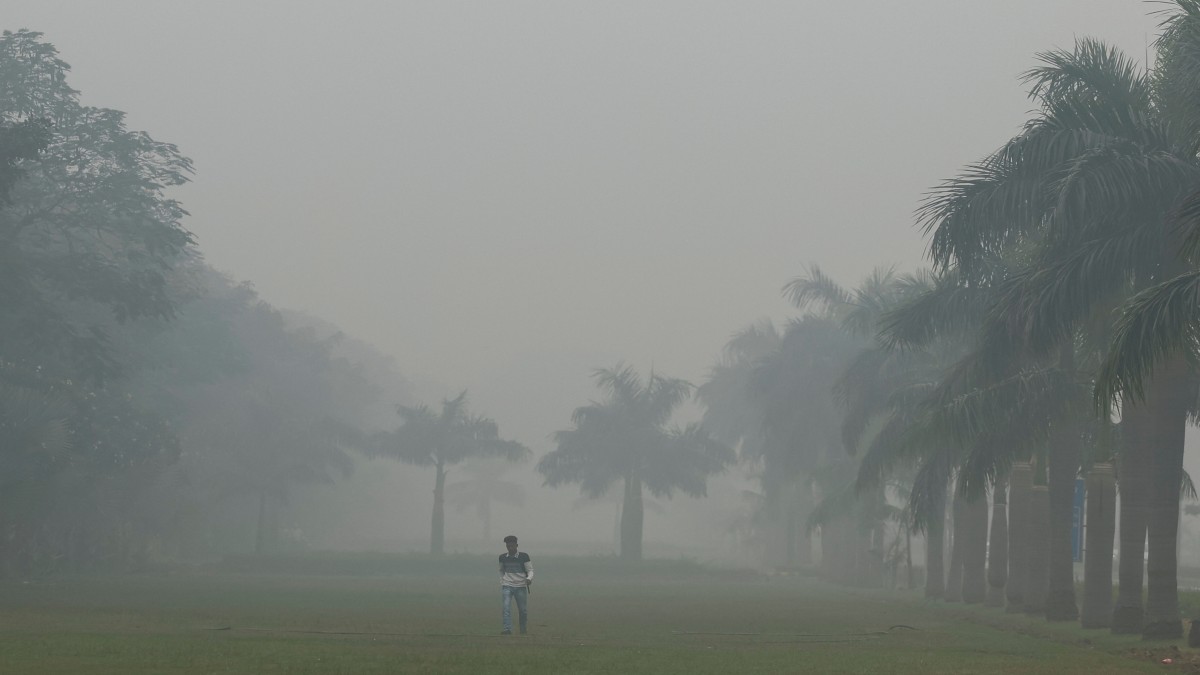Delhi’s air pollution reaches extremely high levels every winter.
It is the same this year.
The National Capital and the surrounding areas were covered in a thick layer of smog on Wednesday morning, and the air quality remained in the “very poor” category.
Several flights were forced to be diverted to nearby locations like Jaipur and Lucknow because of reduced visibility.
Dense smog, poor air quality in Delhi
On Tuesday evening, the air quality index (AQI) was at 316, but on Wednesday morning, it got worse, reaching 370.
Delhi's AQI exceeded 300 in some areas.
An AQI between 0 and 50 is considered ‘good’, 51 and 100 ‘satisfactory’, 101 and 200 ‘moderate’, 201 and 300 ‘poor’, 301 and 400 ‘very poor’, 401 and 450 ‘severe’ and above 450 ‘severe plus’. AQI measures the levels of particulate matter, also called PM 2.5, in the air. These tiny particles can enter the lungs and cause a host of diseases.
According to data from the Central Pollution Control Board (CPCB), the worst air quality in the city was recorded in Aya Nagar, Anand Vihar, and Delhi University’s North Campus, where the air quality exceeded 400, falling into the severe category.
The data also shows that Anand Vihar reported an AQI of 396, Jahangirpuri showed an AQI of 389, ITO recorded an AQI of 378, and IGI Airport recorded an AQI of 368, all of which had AQIs above 300.
At 8 am on Tuesday, Delhi’s 24-hour average AQI was 361.
Around 5.30 am, “very dense” smog began to appear, but the weather service predicted shallow fog for the day, with a high of 32 degrees Celsius.
The IMD said that the weather has changed immensely, with morning fog conditions becoming more intense.
“It has been dense to very dense fog prevailing over the city. In terms of temperature, the minimum temperature in the last 24 hours is 17 degrees Celsius today and 17.9 yesterday morning, with a fall of 0.9 degree Celsius. With fog/smog coverage staying longer part of the day, sunlight cut off may cause a fall of max temperature,” News18 quoted the department as saying.
Impact Shorts
More ShortsThe smog is so dense that it can be seen from space. NASA released satellite images a few days ago showing a layer of haze covering portions of Pakistan and northern India.
Rail and flight services affected
As winter sets in, the city is covered in a thick layer of smog, which further reduces vision.
According to the India Meteorological Department (IMD), visibility at Delhi’s Indira Gandhi International Airport was zero metres at 8.30 am today, with the runway visual range fluctuating from 125 to 500 metres in various areas.
By 10 am, however, with 50 metres of vision, things had somewhat improved.
About eight flights (one to Lucknow and seven to Jaipur) were diverted since 7 am at Delhi IGI Airport due to reduced visibility caused by severe fog, according to airport sources for News18.
Delhi International Airport Limited authorities shared a post about the developments on X, saying, “While landing and takeoffs continue at Delhi Airport, flights that are not CAT III compliant may get affected.”
A navigation system called CAT III allows planes to land even in low visibility situations.
Fog also affected rail traffic, with “loco pilots approaching Delhi maintaining speed restrictions,” the report cited its railway sources.
Delhi among the most polluted cities
Last week, Swiss group IQAir, which draws data from 14 regional monitoring stations, rated New Delhi as the world’s second most polluted city, with a score of 299.
The presence of highly concentrated smoke in the atmosphere is one of the main causes of this thick fog. This smoke facilitates heterogeneous condensation by acting as nucleation sites for water vapour when mixed with dust particles. Because of this process, fog can rapidly condense in the area, significantly lowering visibility, particularly at ground level.
Pakistan’s eastern city of Lahore , which is just 25 kilometres from the border with India, topped the IQAir ranking as toxic smog shrouded the city. IQAir rated Lahore the world’s most polluted city, with an air quality index (AQI) score of 1165, more than 120 times the levels recommended by the World Health Organization (WHO). The situation is so alarming that United Nations Children’s Fund (UNICEF) has warned about the health risks to 11 million children in the region.
On Wednesday, three cities in Bihar, two in Haryana, and Chandigarh were included among the top 10 most polluted cities in the nation, indicating that air quality issues persisted throughout the Indo-Gangetic Plains.
Also read: How high temperatures and strong winds helped Delhi breathe a bit easier this Diwali
Action taken
The second phase of the Graded Response Action Plan is still in effect as Delhi’s air quality worsens. GRAP is invoked stage-wise by the Commission for Air Quality Management in NCR and adjoining areas.
The Stage II category’s 11-point action plan includes, among other things, dust control measures at building and demolition sites, water sprinkling on designated roadways and mechanical sweeping.
Additionally, authorities have advised citizens to reduce vehicle emissions by using public transport and staying indoors as much as possible.
With inputs from agencies


)

)
)
)
)
)
)
)
)



